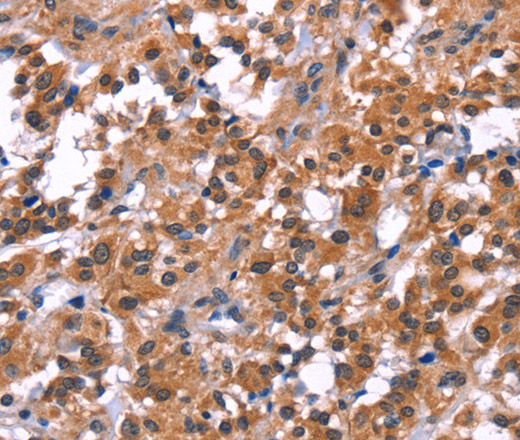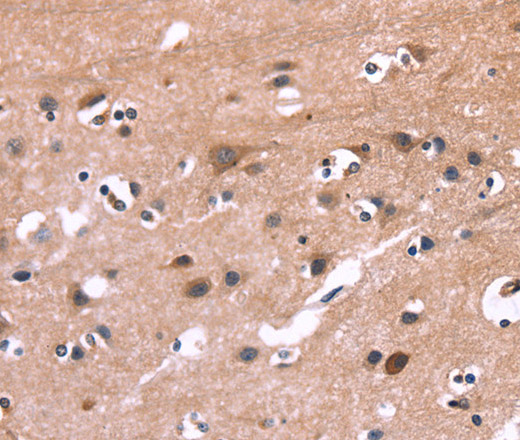PIP5K1B Polyclonal Antibody
For reference only. Please follow the manual included in your kit for instructions.
Catalog Number
Product Name
PIP5K1B Polyclonal Antibody
Catalog Number
RD75584A
Clonality
Polyclonal
Purification Method
Affinity purification
Isotype
IgG
Host
Rabbit
Background
Phosphatidylinositol-4-phosphate-5-kinase (PIPK) synthesizes phosphatidylinositol-4,5-bisphosphate, which regulates various processes including cell proliferation, survival, membrane trafficking, and cytoskeletal organization. The PIPK family is divided into type I, type II and type III . Each type of the PIPK family phosphorylate distinct substrates and they contain an activation loop, which determines their enzymatic specificity and subcellular targeting . The phosphatidylinositol-4-phosphate-5-kinase type I consists of three members, PIPK I , ∫, and , which are characterized by phosphorylating PI4P on the 5-hydroxyl . PIPK I (designated PIPK I ∫ in mouse) is expressed in brain tissue . PIPK I ∫, designated PIPK I a in mouse, is also called STM7. PIPK I has two variants produced by alternative splicing which are expressed in lung, brain, and kidneys.
Immunogen Information
Immunogen
Recombinant protein of human PIP5K1B
Swissprot
O14986
Synonyms
MSS 4MSS4Phosphatidylinositol 4 phosphate 5 kinase type 1 betaPhosphatidylinositol-4-phosphate 5-kinase type I betaPhosphatidylinositol-4-phosphate 5-kinase type-1 betaPI4P5K 1 betaPI51BPIP5K1-betaPIP5K1BPIP5KIbetaPipk 5 betaPipk 5bProtein ST
Gene Accession
BC030587
Applications
Reactivity
Human,Mouse,Rat
Tested Applications
IHC,ELISA
Conjugation
Unconjugated
Dilution
IHC 1:50-1:200
Concentration
0.3 mg/mL
Storage Buffer
PBS with 0.05% sodium azide and 50% glycerol, PH7.4
Storage Instructions
Store at -20°C. Avoid freeze / thaw cycles.

